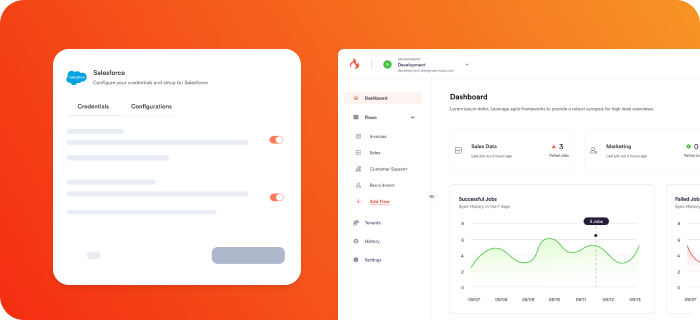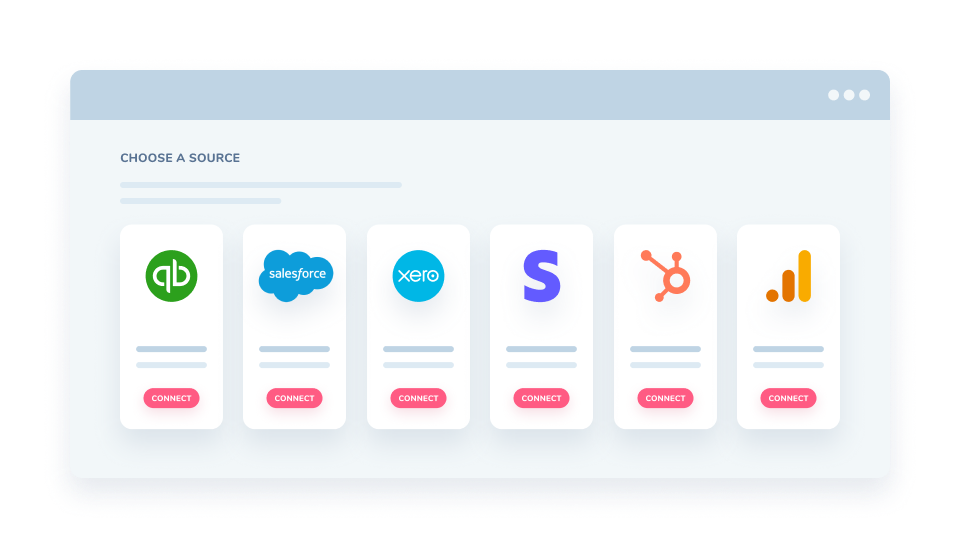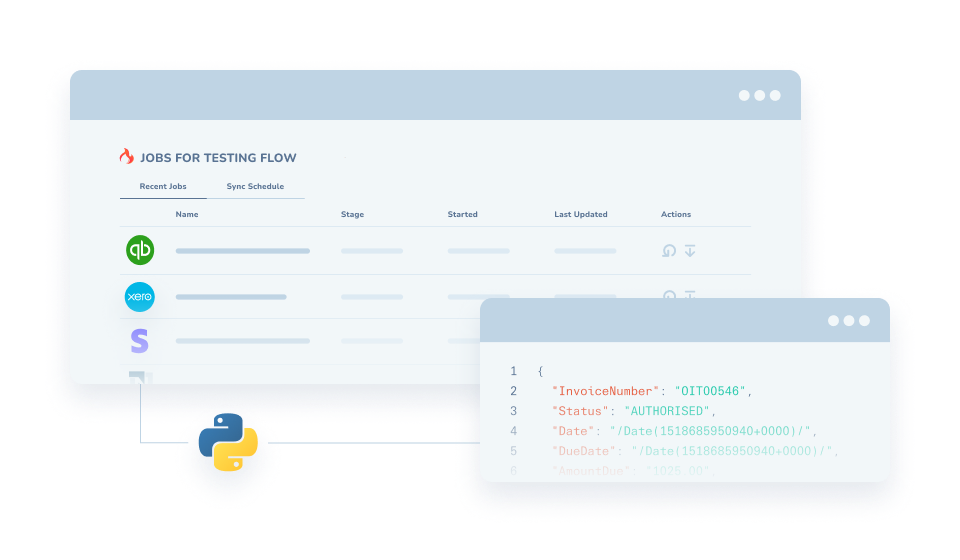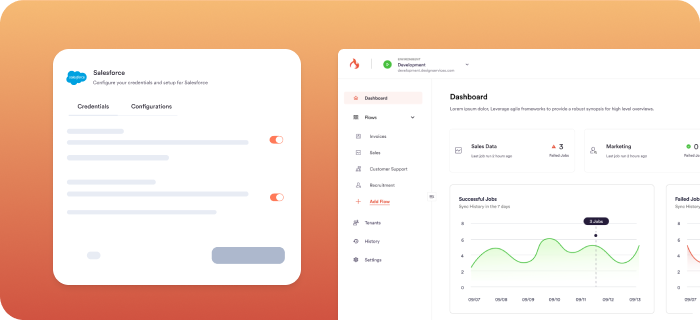
What is hotglue?
hotglue enables you to build native-feeling integrations with the SaaS tools your customers use. hotglue is embeddable, code-first, and built on the Python ecosystem — enabling developers to build flexible, scalabale integrations without the lock-in of traditional iPaaS tools.What’s different about hotglue?
Open source connectors
All of hotglue’s connectors are completely open source and based on the Singer spec. There are already hundreds of connectors available created by open source contributors including hotglue.
Interesting, but why should I care?
One of the biggest reasons developers are (rightly) opposed to using an integration platform is because they want to avoid blockers when shipping new features (and integrations). For example, if your users want an integration with a platform hotglue doesn’t support, you likely don’t want to wait for the hotglue team to add it to their roadmap. Since all hotglue connectors are compatible with Singer, you could easily create a new Singer tap yourself (for instance, using the Singer SDK). This way your team is assured you can ship new integrations leveraging the hotglue platform, without waiting on our team. Pretty cool, right?Stateful integrations
hotglue was designed to correlate data across 3rd party systems. For example, hotglue makes it easy to sync Quickbooks Invoices and Salesforce Opportunities, and programmatically match each opportunity to an invoice. This type of behavior is possible because hotglue’s integrations are stateful – developers have access to a full picture of a user’s data through snapshots. This makes it easier to build complex integrations while relying on hotglue to deal with orchestration, data integrity, and more.Handles non-standardized APIs
SaaS APIs are far from unified – extract the data you need before it reaches your product. hotglue comes with a Python-based transformation layer, so developers can write simple transform scripts to standardize data before it gets to your backend.
hotglue jobs + standardizing data
What are embedded integration (iPaaS) platforms?
Embedded integration platforms enable developers to build native integrations faster and more scalably by sitting within your product. End users connect their data sources within your web app, but the iPaaS handles authentication with the 3rd party system and orchestration of data syncs.
